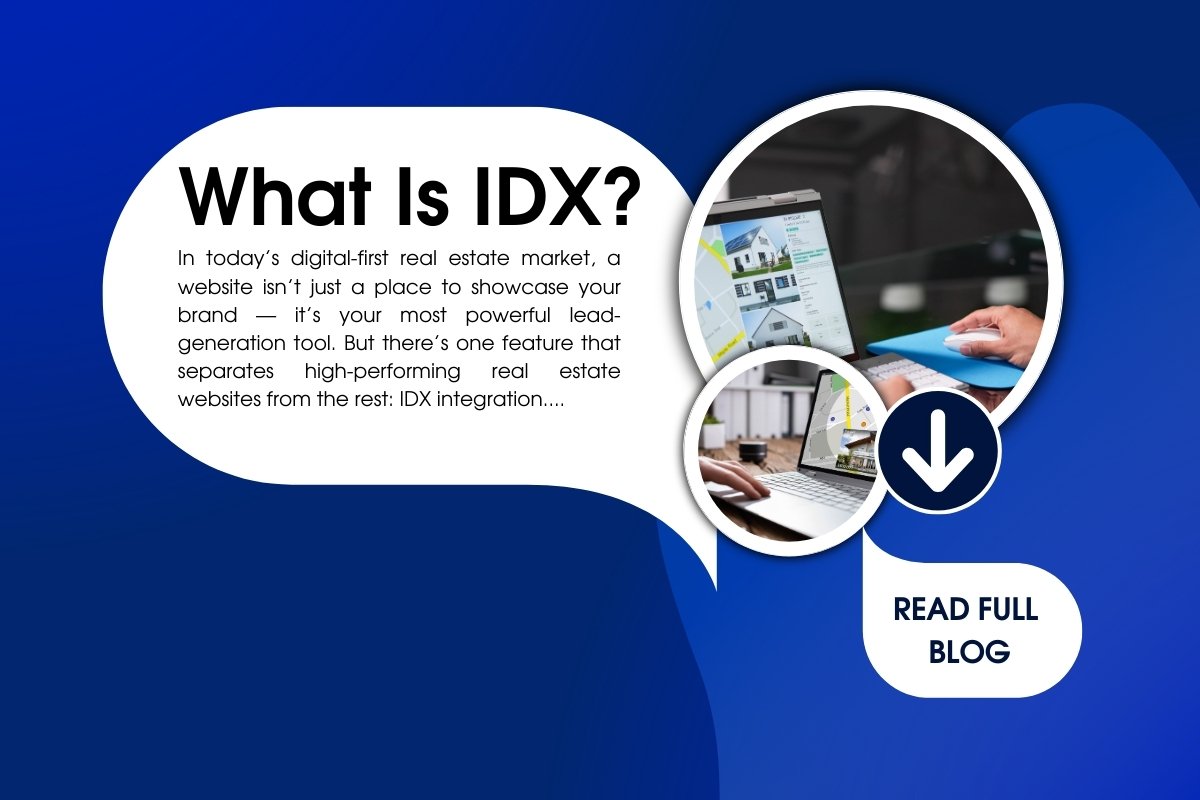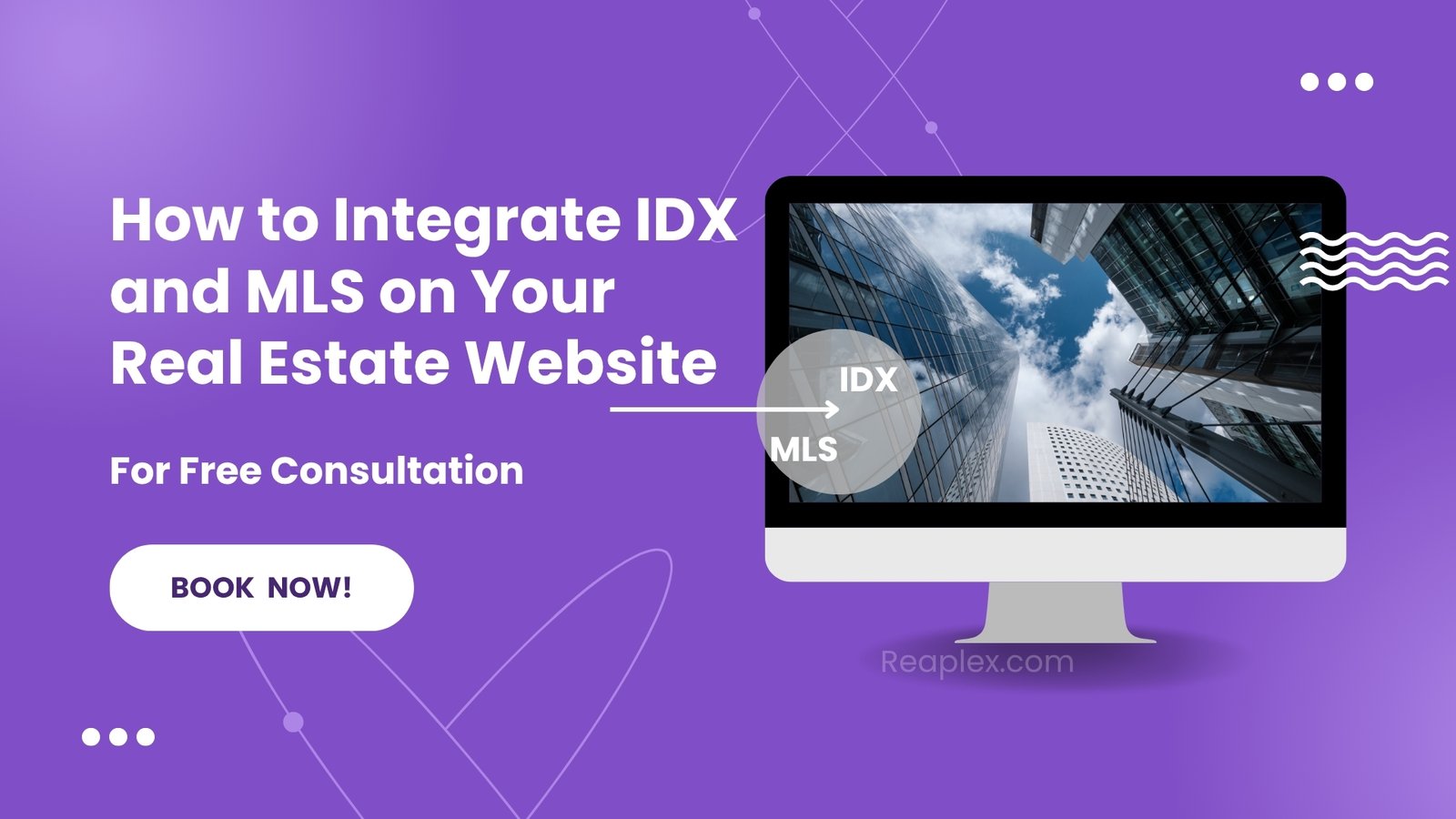
What Is IDX and Why Every Real Estate Website Needs It
In today’s digital-first real estate market, a website isn’t just a place to showcase your brand — it’s your most powerful lead-generation tool. But there’s one feature that separates high-performing real estate websites from the rest: IDX integration. If you’re a real estate agent or brokerage serious about attracting leads and keeping visitors engaged, IDX is non-negotiable.
In this article, we’ll break down exactly what IDX is, how it connects to the MLS, why it’s crucial for your website, and how it directly impacts your ability to win clients.
What Is IDX?
IDX stands for Internet Data Exchange. It’s a technology that allows real estate professionals to display MLS listings directly on their websites.
Instead of forcing potential buyers to leave your site and search Zillow or Realtor.com, IDX keeps them browsing listings on your own platform.
Think of IDX as a bridge:
- On one side is the MLS (Multiple Listing Service) — a private database where agents upload property listings.
- On the other side is your real estate website.
IDX connects the two, pulling in updated MLS listings in real-time, and presenting them beautifully on your site.
Why Is IDX So Important?
1. Keeps Buyers on Your Website
Without IDX, your site is just a digital business card. With IDX, visitors can search properties, save favorites, and return later. The longer they stay, the higher the chance they become leads.
2. Positions You as the Authority
When clients see listings on your website, you’re no longer just “another agent” — you’re a trusted source for property data, just like Zillow or Realtor.com.
3. Generates High-Quality Leads
IDX systems often include features like:
- Lead capture forms
- Property alerts via email
- Saved searches
- Advanced filters (price, location, square footage, etc.)
This means people using your site are actively looking for homes, making them the highest-quality leads possible.
4. Real-Time Accuracy
MLS updates multiple times a day. IDX ensures the listings on your website are always accurate and up-to-date, unlike many third-party platforms that lag behind.
IDX vs. MLS – What’s the Difference?
- MLS (Multiple Listing Service) → A database created by real estate professionals to share listings with one another. Only licensed members can access it.
- IDX (Internet Data Exchange) → The technology that takes MLS data and makes it visible to the public on your website.
In short:
📌 MLS is the data source.
📌 IDX is the tool that makes that data client-friendly.
Key Features of IDX Websites
A strong IDX-powered website should include:
- Advanced Search Filters
Buyers want to narrow down options by price, neighborhood, school district, and property type. - Interactive Maps
Map-based searches let users visualize exactly where homes are located. - Saved Searches & Alerts
Clients can save a search and get notified when a new listing matches their criteria. - Lead Capture Tools
Pop-ups, gated content, and “Request a Showing” buttons to turn browsers into leads. - Mobile-Friendly Experience
More than 60% of property searches now happen on mobile. Your IDX must be responsive.
SEO Benefits of IDX
Google loves fresh content. Every time the MLS updates, your website automatically updates with new listings — which keeps your site dynamic and SEO-friendly.
That means:
- More indexed pages in search engines
- Higher chances of ranking for long-tail keywords (e.g., “3-bedroom homes in Miami under $500k”)
- Stronger authority in local search results
How IDX Helps You Compete with Zillow & Realtor.com
Let’s face it — buyers often start on big platforms. But IDX helps you compete directly:
- You offer the same MLS data as Zillow, but with the personal touch of a local expert.
- Instead of losing visitors to a competitor’s site, you keep them engaged on your brand.
- You control the user experience — customized search tools, lead forms, and even branding on listing photos.
Common IDX Mistakes (and How to Avoid Them)
❌ Using outdated IDX plugins → Slow, clunky search = frustrated visitors.
✅ Solution: Invest in a modern, mobile-optimized IDX solution.
❌ No lead capture → Visitors browse, but you never get their info.
✅ Solution: Add forms, signup incentives, and “Request Info” CTAs.
❌ Weak design → Listings look generic.
✅ Solution: Customize your IDX to match your brand for a seamless experience.
Choosing the Right IDX for Your Website
Not all IDX solutions are equal. Here’s what to look for:
- Seamless MLS integration (updates in real-time)
- Customizable design (so it blends with your website branding)
- CRM integration (to track leads automatically)
- Mobile optimization (fast, responsive, user-friendly)
- SEO-friendly setup (indexable listings for Google)
At Reaplex, we specialize in building IDX-powered real estate websites that not only look professional but are engineered to convert visitors into leads.
Conclusion
IDX isn’t just a “nice-to-have” — it’s the foundation of a successful real estate website. It keeps buyers on your platform, positions you as a trusted authority, generates leads, and helps you compete against giants like Zillow.
If your current website doesn’t have IDX integration, you’re leaving leads — and commissions — on the table.
Ready to upgrade your real estate website with IDX? Reaplex can help. We build custom, high-performance IDX websites designed to grow your business.

